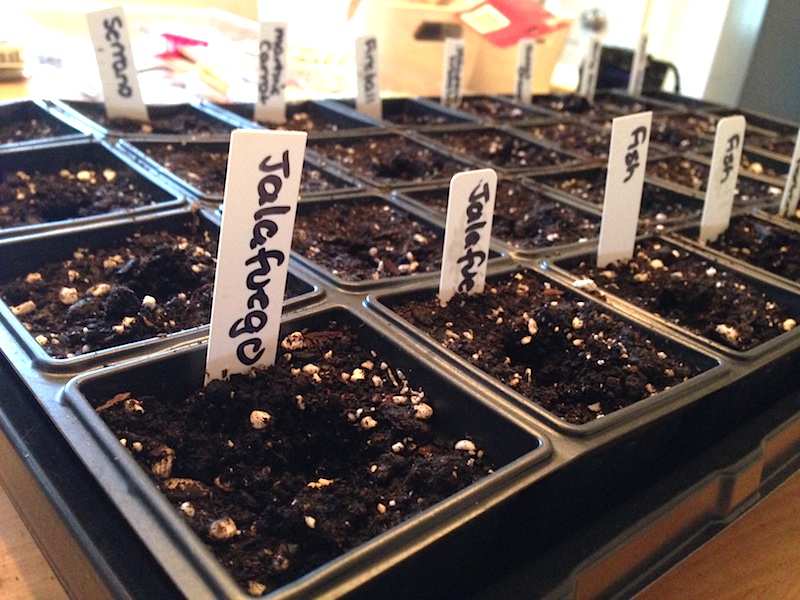Every year, I panic and think I am completely late to the seed sowing party — and every year, I am right on time. The perks of keeping a scratch-pad of a written journal in your gardening bag includes being able to figure out when you’ve accomplished major milestones each year, at the very least. On Sunday, April 6th, we pulled out all the trays and cells to clean. Fortunately, we had a bunch of new ones in Curt’s shop (Hello, over-orderer!), so there wasn’t any cleaning involved. We unearthed the Johnny’s seed starter from the tool shed (I still have two more enormous bags, in case anyone needs some.), and then I set about mapping what seeds would go in which trays and who would be tray neighbors.
The idea of tray neighbors is important as best sowing practices include putting slow germinators with other slow germinators. That way, your seeds are germinating at relatively the same time. This matters as most seeds need to germinate in darkness. But once they begin to rise, you must remove the dome and set them under lights or you’ll get leggy, scraggly seedlings. With this in mind, I remembered peppers were terribly slow on the uptake, so I put them in their own trays, and tried my very best to put like with like. Obviously, my system is never perfect because there are so many variables when it comes to seed starting, from the seeds themselves (Are they new? Have they been treated kindly?), moisture levels, temperature, and, of course, luck.
After our initial sowing prep on Sunday of filling the cells with the seed starter material, writing out labels, and marking what each and every cell would hold (336!), we left the actual sowing to Monday. This may have been on account of an impromptu visit to Patio for cocktails with our friends Michael and Trish. On Monday afternoon, though, I cranked through ’em all before Curt even arrived home. We wound up with eight trays of starters in all: three 32-cells of tomatoes (with the determinate ‘maters grouped into one and a half trays), one 32-cell of peppers, one half 32-cell of eggplant and assorted Brussels sprouts, one 32-cell of cabbage, and then two 72-cells — one of lettuce and onions and the other of basil and marigolds.
…

